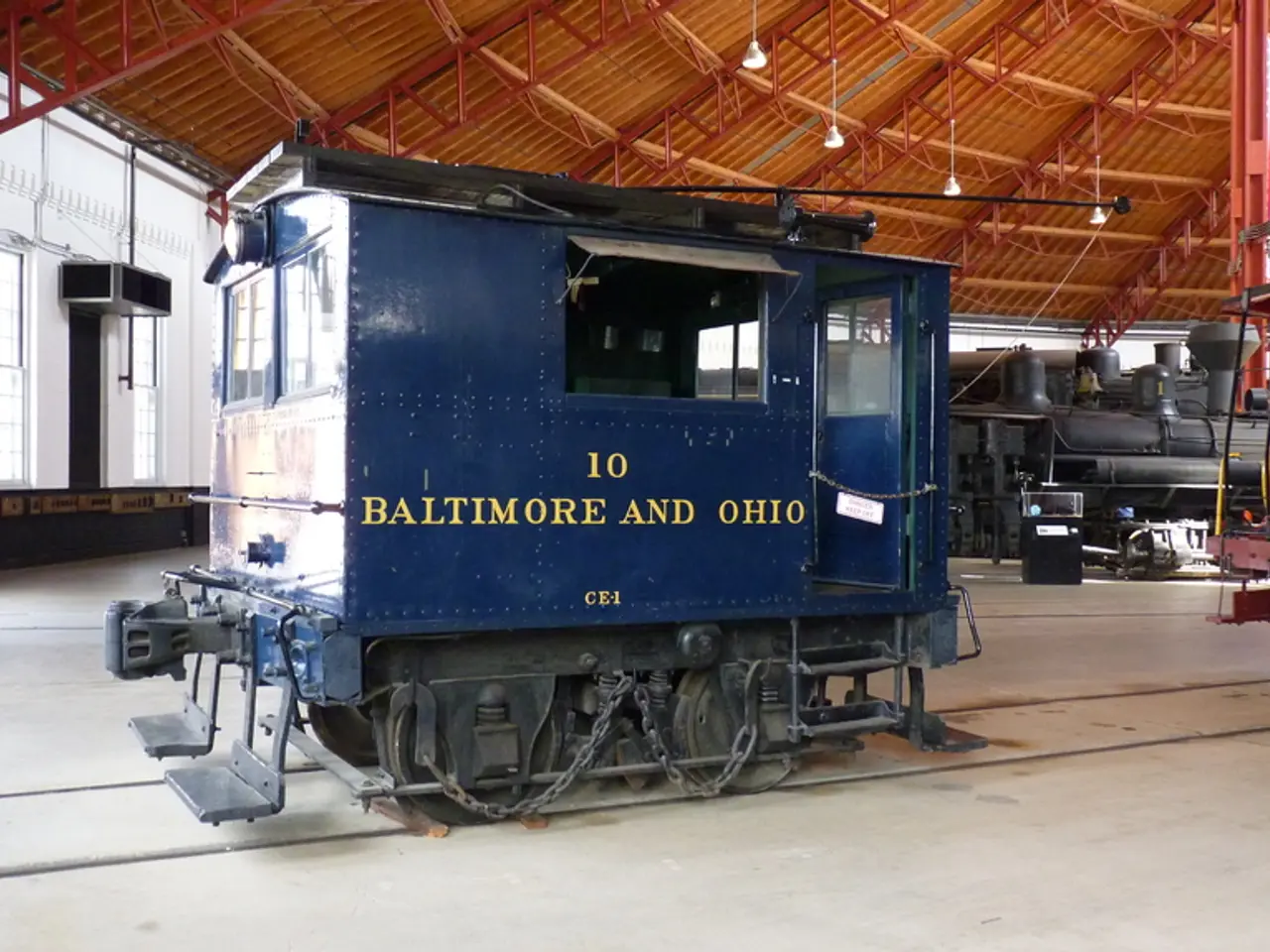Berlin encounters traffic gridlock initially, followed by bottlenecks on the BER-Express
Berlin and Brandenburg are set for a significant transformation in regional train connections, with the introduction of the Dresden Line (RE20) and several other improvements. The new line will run hourly from Berlin Hauptbahnhof to Lübbenau, significantly improving travel times and frequencies.
The Dresden Line, which has been under construction since 2017, is set to go into operation on December 14, 2025. It will reduce the journey from Berlin Central Station to Berlin Brandenburg Airport (BER) to just over 20 minutes, down from longer times previously. This is accomplished by shifting the Airport Express (FEX) trains from their previous northern route via Gesundbrunnen and Ostkreuz to a faster southern route via Potsdamer Platz and Südkreuz. As a result, the connection becomes more direct and quicker.
The FEX will run every 15 minutes, double the current frequency, enhancing service reliability. Other regional train lines will also benefit from these improvements. For instance, the RB24 from Eberswalde will extend to reach BER Airport directly, and the new RE20 line from Lübbenau to BER and Berlin Central will operate starting with the December 2025 timetable change. From February 2026, the RE32 will run hourly from Oranienburg to BER.
These developments notably enhance airport accessibility for eastern Berlin and Brandenburg residents by integrating more regional lines with BER and increasing the number of direct connections. However, some passengers, particularly those using Gesundbrunnen station or traveling from western districts like Spandau and Falkensee, may face less convenient access due to altered routes and required transfers.
By late 2027, the Lübbenau-Cottbus line is expected to be fully double-tracked, allowing two regional express (RE2 and RE20) trains to run hourly to the Lusatia region. Thomas Dill, from VBB, expresses his excitement about this development, as it means no more interim conditions like the jointly operated lines RB24, RB32, and RE8.
The BER airport station is the busiest station in Brandenburg, with over 200,000 passengers boarding, disembarking, or transferring there daily. The commissioning of the Dresden line is a significant step towards improving the travel experience for many passengers in Berlin and Brandenburg through shorter journey times, doubled train frequency on key routes, and expanded regional train links.
However, the topic at hand is not without its challenges. From September 24th to December 14th, almost the entire Brandenburg section of the Anhalter Bahn will be closed for track and switch renewal, affecting both regional and long-distance traffic. The loss of the fast direct connection of the Berlin-Gesundbrunnen station due to the relocation of the FEX will not be compensated, and the Schoenefeld station will no longer be served by regional trains.
Despite these challenges, the future of train travel in Berlin and Brandenburg looks promising. Berlin's Transport Senator Ute Bonde and Brandenburg's Infrastructure Minister Detlef Tabbert, along with Alexander Kaczmarek from Deutsche Bahn, are optimistic about the rearrangement of regional train connections around the BER airport for the December 14th timetable change. Perhaps by late 2027, the RE9 will operate at least a few times a day, providing a fast, electrified direct connection to Poland's Szczecin. These trains could be extended to reach Berlin Brandenburg Airport (BER), but there are uncertainties due to Poland's potential lack of follow-through and the question of whether enough dual-system trains will be available.
Thomas Dill, a visionary in the industry, dreams of extending the Lübbenau-Cottbus line to Forst once the electrification is complete. The Dresden line, initially a poor example of planning and realization, has since become a good example. It is a testament to the potential of well-planned and executed infrastructure projects to transform the way we travel.
In summary, the Dresden line introduces faster, more frequent, and better integrated train services to BER Airport, improving the travel experience for many passengers in Berlin and Brandenburg through shorter journey times, doubled train frequency on key routes, and expanded regional train links. The challenges ahead are significant, but the potential benefits are equally promising.
The Dresden Line, slated to commence operation on December 14, 2025, will bring a remarkable change in the regional train landscape of Berlin and Brandenburg. This new line, with its hourly service from Berlin Hauptbahnhof to Lübbenau, will significantly impact the finance sector, given the time and cost efficiency introduced for commuters and travelers.
The enhancement of transportation networks, such as the Dresden Line, will undoubtedly influence the industry, particularly finance, as it potentially increases the mobility of goods and services in the region. For instance, the RB24 from Eberswalde will directly connect to the BER Airport, offering businesses an easier transportation option, facilitating on-time deliveries, and fostering economic growth.




